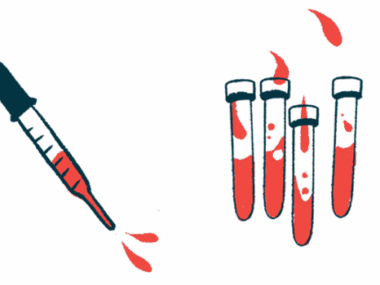The Long, Blurry Days Leading Up to My Diagnosis
Written by |

I was in a hospital room, dazed and confused. A doctor had sent me there after a chaotic trip to the emergency room.
The first nurse to treat me said I had a hemoglobin level of 3.8 deciliters. My resting heart rate was 140 beats per minute, and when I sat up, it was 160. I was in congestive heart failure.
What did all of that mean? I had no idea. I just knew it was bad. “Heart failure” is not something anyone wants to hear, and at age 19, it was terrifying. As I sat in the hospital bed, I had no idea what was going on. Most of the next five days were a blur.
I do remember feeling a sense of relief, though. After about 10 months of symptoms, all seemingly unrelated – eye issues, nosebleeds, joint pain, and shortness of breath – I felt vindicated. I wanted to tell everyone who had given me skeptical looks when I mentioned another of my health issues, “Ha! I told you!” At the same time, I wished I had been wrong, and that it had all been in my head.
I had three IVs that left permanent scars. But I remember feeling better after just a few hours of having fluids and blood pumped into me. Then the tests came.
I went through an unbelievable number of tests over those five days. I was poked, prodded, stabbed, and questioned at all hours of the day and night. Five doctors were trying to figure out what was wrong with me, which meant five separate rounds of testing.
Thankfully, the lead doctor, Dr. Cowan, was amazing. He stopped unnecessary testing, such as when other doctors wanted to perform an endoscopy and a colonoscopy. Cowan said there was no reason to do so, as I had no abdominal pain and no blood was coming out where it shouldn’t
The worst test was the kidney biopsy, during which I had to lie motionless on my stomach. Doctors stuck a long needle in me and clipped off a piece of my kidney — three times. But it didn’t hurt as much as the pain I had before being hospitalized. The worst part of the biopsy was that I had to lie fallow for eight hours.
My family helped me through everything. My parents arrived right away, and my sister soon after. My brother, who lived eight hours away, dropped everything and immediately drove to see me. I remember his arrival in the middle of the night, with a flower and a balloon. My family took turns staying the night with me, which was a big sacrifice because they often had to sleep on an uncomfortable chair. But I was never alone, and I needed that more than anything.
After five long days in the hospital, I finally went home. It was the day before Thanksgiving, and we were all grateful I was home before the holiday. But I was still in a lot of pain.
Strangely, the worst pain was in the third and fourth toes of my right foot, which looked as if they were frostbitten. Apparently, I almost lost them. The blood vessels were damaged, and the toes turned purple. While they eventually healed, the process was slow and painful.
The forefinger and middle finger on my right hand showed signs of this as well. I now have Reynaud’s phenomenon in both toes and those fingers.
I did find out the reason my hemoglobin level was so incredibly low. Cowan told me that blood regenerates itself after a certain amount of time, and my blood was not regenerating. He said I was essentially bleeding to death with no blood loss, except for a few nosebleeds.
I have to give Cowan credit. Not only did he stop the unnecessary testing, but also less than a week after I left the hospital, he diagnosed me with granulomatosis with polyangiitis (formerly called Wegener’s). A doctor diagnosing a patient with a rare condition that quickly is amazing.
I am forever grateful to Cowan, along with the other doctors and nurses who treated me. I wouldn’t be here today if not for them.
***
Note: ANCA Vasculitis News is strictly a news and information website about the disease. It does not provide medical advice, diagnosis, or treatment. This content is not intended to be a substitute for professional medical advice, diagnosis, or treatment. Always seek the advice of your physician or other qualified health provider with any questions you may have regarding a medical condition. Never disregard professional medical advice or delay in seeking it because of something you have read on this website. The opinions expressed in this column are not those of ANCA Vasculitis News or its parent company, Bionews, and are intended to spark discussion about issues pertaining to ANCA vasculitis.





Vic Cross.vi
Been there done that at age 77.
susan deane
So - post high bp readings and sinus problems and hair falling out - and - you will know the rest = and the medical profession of the mid 1990s not yet in front of the now GPA - I simply became more and more ill. I was 51 and eventually collapsed and was taken by ambulance to one hospital with bleeding sinuses, lungs and kidneys - in fact there was no kidney function. So - I was hurried off by ambulance again, to a much larger, specialist hospital. And = there I was for 4 months basically fighting for my life. And - bedridden for all of it. Each day brought a routine of masses of drugs, intravenus this and that till the veins on one arm collapsed. I gained heaps in a couple of weeks because of the steroid part of the treatment and lost it over the months because the kidney damage had caused anorexia. I would determine that any food would HAVE to have 1/4 eaten even if it was each item. I still could not walk when I was released. 2 years of daily cyclophosphomide and prednazone and other drugs to offset the toxicity meant I ended up with chronic skin cancer and many ops since. Flare ups over the years and hospital stays were a clot on right back of the brain (stroke) = respiratory a few times and one then both eyes with all the itises. Iritis - schleritis - and so on. But I am 81 - I have travelled and I have lived. But - am now diagnosed with leukemia. It appears the red flags were = autoimmune disease (tick), have had chemo before (tick) and cannot remember the others. Again - I am alive - it is CLL - Chronic Lymphocitic Leukemia and slow moving, incurable but probably no treatment = chemo would probably for someone as old as I - be more toxic than the disease itself. I am Australian and throughout these massive health life threatening health problems I have had our free (if sort) health system ===== thank you Aus. and good luck to everyone.